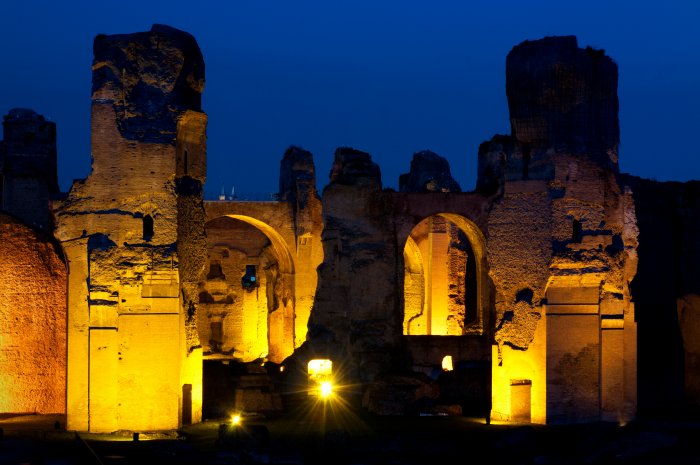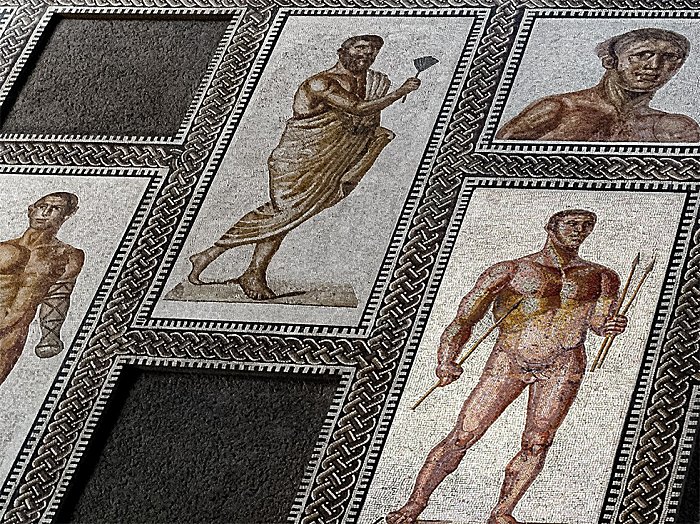Baths Of Caracalla: Italian Antique Thermae Complex For Leisure, Gossip, Business And Socialisation
A. Sutherland - AncientPages.com - The Baths of Caracalla are undoubtedly among imperial Rome's most ambitious architectural masterpieces.
Aerial view of Baths of Caracalla. Credit: Adobe Stock - Stefano Tammaro
Their name relates to the Roman Emperor Marcus Aurelius Antoninus from 198 to 217 AD, better known by his nickname 'Caracalla. 'The Baths of Caracalla are the second largest (after the Baths of Diocletian) but they represent most complete bathing complex in Rome.
His colossal baths, located in the south of Rome, were not only the emperor's famous achievement but also represented a unique world where the Roman society enjoyed entertainment and intellectual debates and was busy concluding business contracts. They could relax and spend their free time caring for both the body and the spirit in the baths.
Even though all residents had to pay for the use of the baths, the fee was not high, and it was worth paying to enjoy comfortable bathing.
This facility was the largest swimming pool, which, in addition to many swimming pools, consisted of spaces for various sports and social gatherings of the Rome's citizens.
Ruins of the Baths of Caracalla in Rome. Credit: Abobe Stock - Only Fabrizio
Emperor Caracalla commissioned the monumental bathhouse complex in the years 211-216. However, it is believed that Emperor Septimius Severus initiated the construction of the baths, which was later completed during the reign of his son, Caracalla.
At the time of the construction, it was the second largest thermal complex in Rome, second only in size to the Trajan's Thermae ('Terme di Traiano'), which is today in ruins.
For five years, usually, about 9,000 laborers were involved in the complex's construction every day. The thermal baths - extended with several additional structures during the reign of Emperor Alexander Severus - functioned for almost 300 years.
Impressive Architecture Of The Caracalla's Baths
The thermal baths of Caracalla had about 250 columns, and more than 6,000 cubic meters of the finest building materials like granite and marble were used to decorate the interiors.
Symmetry Dominated The Baths Of Caracalla
The vast bath complex was arranged symmetrically along the great hall with the four doors leading to the vestibule, changing rooms, and then into the gyms, a series of rooms for diverse physical activities.
Athletes mosaics from the Baths of Caracalla. Beautiful mosaics covered the floors of the floors of the public libraries located on the east and west sides of the bath complex. Image source
It is assumed this place could accommodate up to 1,500 -1,600 bathers simultaneously, and about 8,000 Romans passed through the complex daily.
The bath complex covered approximately 25 hectares (62 acres). The complex is rectangular, measuring 337 m × 328 m. Its construction involved the moving of a substantial amount of earth, as parts of the nearby hills had to be removed or leveled into platforms. Several million bricks were used in the construction.
The water used to power the pools and attractions was taken mainly from the nearby Aqua Marcia aqueduct. The water was collected in cisterns located in the southern part of the thermal baths. It is estimated that the cistern could hold about 8,000 liters of water, which was then heated using a wood-burning stove. To ensure the optimal temperature in the pools throughout the day, about 1 ton of wood was used to burn.
The exterior and interior of the baths were richly decorated. Even today, there are still well-preserved fragments of water fountains, statues, sculptures, floor mosaics, and marble pieces, once part of the building's decoration.
Rooms With Many Functions
The complex consisted of more than 20 rooms, some of which were the most important and popular.
Ruins of the Baths of Caracalla. Credit: Adobe Stock - Marek Poplawski
The first was the 'caldarium,' a circular pool with warm water (unfortunately, this one no longer exists.) Another was the 'tepidarium' (medium-temperature room), and the next was the 'frigidarium, a rectangular pool of cold water decorated with beautiful sculptures. Popular and frequently visited was also an Olympic-sized swimming pool called the 'Natatio.' All these spaces were the central part of the baths' complex.
They were surrounded by smaller rooms, such as locker rooms or two gymnasiums built for physical exercise rooms). A roof, except for the palestra, closed most of the rooms. The palestra was the place for people interested in wrestling and boxing exercises.
The two large rooms at the corners were used as libraries, one for Greek language texts and one for Latin language texts. The surviving library had three walls covered by 32 niches that housed the books.
Written by – A. Sutherland - AncientPages.com Senior Staff Writer
Copyright © AncientPages.com All rights reserved. This material may not be published, broadcast, rewritten or redistributed in whole or part without the express written permission of AncientPages.com
More From Ancient Pages
-
 Giants Roamed The Earth Millions Of Years Ago
Ancient Mysteries | Sep 30, 2015
Giants Roamed The Earth Millions Of Years Ago
Ancient Mysteries | Sep 30, 2015 -
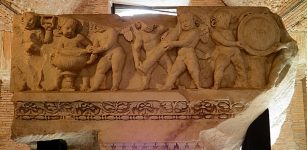 On This Day In History: Julius Caesar Dedicated Temple To Venus Genetrix – On Sep 26, 46 BC
News | Sep 26, 2016
On This Day In History: Julius Caesar Dedicated Temple To Venus Genetrix – On Sep 26, 46 BC
News | Sep 26, 2016 -
 On This Day In History: First Experimental Hydrogen-Filled Balloon Reaches A 900m Altitude – On August 27, 1783
News | Aug 27, 2016
On This Day In History: First Experimental Hydrogen-Filled Balloon Reaches A 900m Altitude – On August 27, 1783
News | Aug 27, 2016 -
 Fenrir: Oldest Of Three Monstrous Children Of God Loki In Norse Mythology
Featured Stories | Mar 28, 2018
Fenrir: Oldest Of Three Monstrous Children Of God Loki In Norse Mythology
Featured Stories | Mar 28, 2018 -
 Older Than Dracula: In Search Of The English Vampire
Myths & Legends | Dec 9, 2022
Older Than Dracula: In Search Of The English Vampire
Myths & Legends | Dec 9, 2022 -
 On This Day In History: Adventurer Thor Heyerdahl And His Kon-Tiki Reached French Polynesia – On August 7, 1947
News | Aug 7, 2016
On This Day In History: Adventurer Thor Heyerdahl And His Kon-Tiki Reached French Polynesia – On August 7, 1947
News | Aug 7, 2016 -
 Sacred Healing Earth Of Chimayo And The Mysterious Black Christ Crucifix
Featured Stories | May 24, 2019
Sacred Healing Earth Of Chimayo And The Mysterious Black Christ Crucifix
Featured Stories | May 24, 2019 -
 Ancient Manuscript Reveals: Jesus Was Married And Fathered Two Children With Mary Magdalene
Archaeology | Nov 10, 2014
Ancient Manuscript Reveals: Jesus Was Married And Fathered Two Children With Mary Magdalene
Archaeology | Nov 10, 2014 -
 More Than 27,000 Artifacts Illegally Collected By ‘Expert In Archaeology’ – Seized In France
Artifacts | Dec 18, 2020
More Than 27,000 Artifacts Illegally Collected By ‘Expert In Archaeology’ – Seized In France
Artifacts | Dec 18, 2020 -
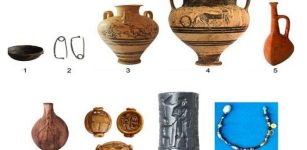 Cyprus’s Copper Deposits Created One Of The Most Important Trade Hubs Of The Bronze Age
Archaeology | Mar 17, 2023
Cyprus’s Copper Deposits Created One Of The Most Important Trade Hubs Of The Bronze Age
Archaeology | Mar 17, 2023 -
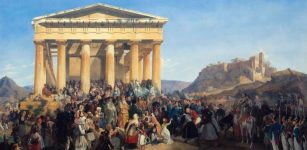 On This Day In History: Independence Of Greece Is Recognized By The Treaty Of London – On May 7, 1832
News | May 7, 2016
On This Day In History: Independence Of Greece Is Recognized By The Treaty Of London – On May 7, 1832
News | May 7, 2016 -
 Lhasa’s Potala Palace: Greatest Building In Tibet With History Of 1300 Years
Civilizations | Nov 23, 2018
Lhasa’s Potala Palace: Greatest Building In Tibet With History Of 1300 Years
Civilizations | Nov 23, 2018 -
 On This Day In History: The U.K.’s First Murder Case Solved By A Fingerprint – On March 27, 1905
News | Mar 27, 2017
On This Day In History: The U.K.’s First Murder Case Solved By A Fingerprint – On March 27, 1905
News | Mar 27, 2017 -
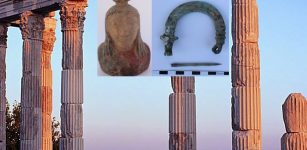 Excavations Reveal New Artifacts That Change History Of Ancient City Of Pergamon
Archaeology | Jul 4, 2020
Excavations Reveal New Artifacts That Change History Of Ancient City Of Pergamon
Archaeology | Jul 4, 2020 -
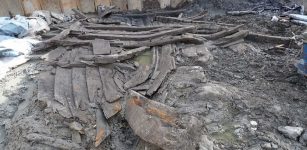 Three 17th Century Shipwrecks Discovered In Central Gothenburg, Sweden
Archaeology | Oct 8, 2019
Three 17th Century Shipwrecks Discovered In Central Gothenburg, Sweden
Archaeology | Oct 8, 2019 -
 Why Were Conch-Shell Trumpets So Important To The Ancient Chacoan Society?
Archaeology | May 7, 2024
Why Were Conch-Shell Trumpets So Important To The Ancient Chacoan Society?
Archaeology | May 7, 2024 -
 Giant 4,500-Year-Old Axe Grinding Site Discovered In Scotland
Archaeology | Dec 13, 2022
Giant 4,500-Year-Old Axe Grinding Site Discovered In Scotland
Archaeology | Dec 13, 2022 -
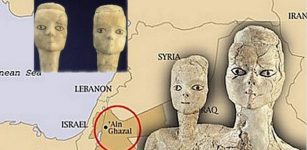 Stone Age Statues Were Taken To Britain For Restoration In 1990 – Never Returned Home To Jordan
News | Apr 6, 2021
Stone Age Statues Were Taken To Britain For Restoration In 1990 – Never Returned Home To Jordan
News | Apr 6, 2021 -
 Ancient Egyptians Knew About ‘Demon Star’ Algol’s Variability 3,000 Years Before Western Astronomers
Archaeology | Nov 13, 2018
Ancient Egyptians Knew About ‘Demon Star’ Algol’s Variability 3,000 Years Before Western Astronomers
Archaeology | Nov 13, 2018 -
 Babylonian Astronomers Used Geometry To Track Jupiter – 1,400 Years Before Europeans
Archaeology | Jan 28, 2016
Babylonian Astronomers Used Geometry To Track Jupiter – 1,400 Years Before Europeans
Archaeology | Jan 28, 2016


